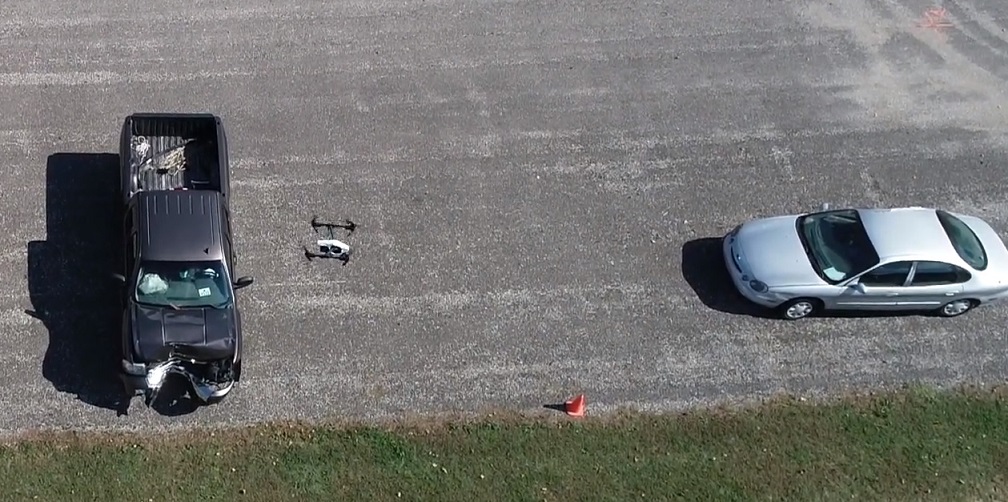This post is also available in:
 עברית (Hebrew)
עברית (Hebrew)
Secondary accidents go up by a factor of almost 24 during the time that highway safety officials are assessing and documenting a car crash site. “It’s the people at the back of the queue where you have traffic stopped who are most vulnerable and an approaching inattentive driver doesn’t recognize that traffic is stopped or moving very slowly until it is too late,” said Darcy Bullock from Purdue University. “The occurrence of these secondary crashes can be reduced by finding ways to safely expedite the clearance time of the original crash.”
Conventional mapping a severe or fatal crash can take two to three hours depending on the severity of the accident, according to Bullock. A new drone solution with a thermal imaging capability is already in use. “Our procedure for data collection using a drone can map a scene in five to eight minutes, allowing public safety officers to open the roads much quicker after an accident,” said Ayman Habib, Purdue’s Thomas A. Page Professor of Civil Engineering, who developed the photogrammetric procedures and envisions even more uses for the technology.
The Tippecanoe County Sheriff’s Office in Indiana used drones to map crash scenes 20 times in 2018 and another 15 times in the same year to support specialty law enforcement teams throughout Tippecanoe County and in neighboring counties and jurisdictions. “Overall, it can cut 60 percent off the downtime for traffic flow following a crash,” said Capt. Robert Hainje of the Tippecanoe County Sheriff’s Office. The drone technology helps with search and rescue, aerial support over water for diver teams or in wooded areas and for fugitive apprehension.
The researchers operated field procedures and post-processing of images to create orthorectified images that clearly illustrate the position of vehicles, infrastructure and general terrain adjacent to the crash site.
The drones are programmed to use a grid-type path and record about 100 photos in two-second intervals. This post-processed data is used to develop an accurate scale map that with photos at the scene provides enough data to create a 3D print of the scene, according to purdue.edu.
“The technology is so much faster than traditional ground-based measurements and provides a much better comprehensive documentation that it opens up all different kinds of research,” Habib said. “It can provide high-quality maps, imagery, and models for post-crash investigation by engineers and public safety officials.
The technology has many other civil engineering applications and can be used to estimate the volume of material needed or used for a construction project within a couple of percentage points.


























